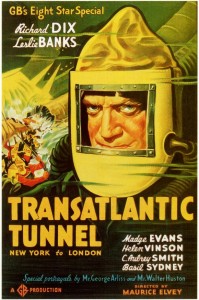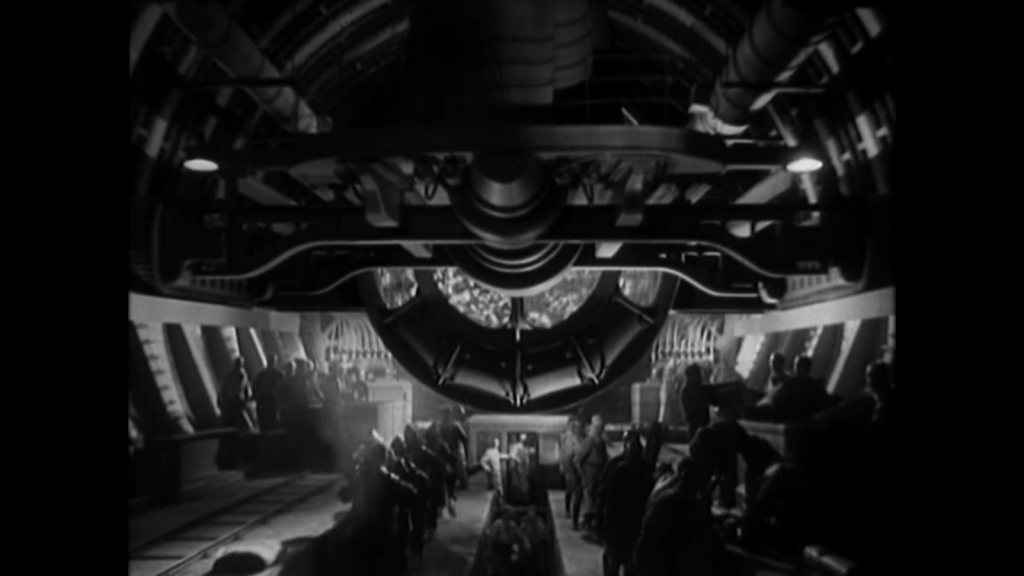Transatlantic Tunnel / Tunnel, The (1935)
“There’s a certain charm about a dreamer — even if he dreams of iron and steel.”
|
Synopsis: |
|
Genres, Themes, Actors, and Directors:
Review: Meanwhile, the sexy daughter (Helen Vinson) of a primary financier (C. Aubrey Smith) is naturally waiting in the wings for a chance to nab McAllan for herself, and Vinson’s would-be suitor (Basil Sidney) plays a conveniently situated villain in the entire affair. Yet another dramatic tension arises later in the film, as McAllan’s grown son (Jimmy Hanley) enters into the tunnels to work, and McAllan must reconcile his very-real concern with the fact that he routinely asks hundreds of other workers to place their lives in similar risk. While these plot elements all serve to add some personal dramatic tension to the storyline, I was surprised to find myself wishing for even more of a “hard” scientific emphasis; details of the dangers inherent in the tunnel-building itself are glossed over far too superficially. Throughout the film, much is made about the fact that building a transatlantic tunnel remains a critical element in the pursuit of world peace — which doesn’t make much sense at all, until one contextualizes the movie within a global pre-WWII tableau; yet it still comes across like a weak argument at best. Nonetheless, this film may be of interest to those curious to see its creatively conceived “futuristic” sets (including wide-spread use of television) and its early vision of the type of engineering moxie necessary to carry out such a grand, as-of-yet unrealized plan. Redeeming Qualities and Moments: Must See? Links: |



One thought on “Transatlantic Tunnel / Tunnel, The (1935)”
First viewing. Not a must.
I’m in complete agreement with the assessment given and find little to add, since the review rather expresses my feeling entirely.
Perhaps the film had a more encouraging reception when it was first released – perhaps because of its technical aspects or the overall ambitiousness of its premise. That’s a possibility.
Personally, I find the script to be trying much too hard too much of the time, and its forced quality is troublesome. There are moments that stand out as intriguing (esp. involving the villains in the piece). But the melodrama is a little thicker than it needs to be.
All told, rather forgettable.